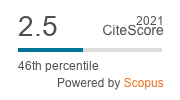Multidisciplinary Performance Enhancement on a Fixed-wing Unmanned Aerial Vehicle via Simultaneous Morphing Wing and Control System Design
DOI:
https://doi.org/10.5755/j01.itc.52.4.33527Keywords:
aircraft design, morphing wing, aerodynamics, autonomous flight performance, optimizationAbstract
Aerial vehicle design process usually aims to maximize performance in a specific flight phase regarding a particular topic such as aerodynamics, flight qualities, or control. This paper proposes a multidisciplinary enhancement both in aerodynamics and longitudinal autonomous flight performance (LAFP) via modern simultaneous design methodology conducted with a novel morphing idea. In this regard, the main wing of a fixed-wing unmanned aerial vehicle (UAV) is redesigned with wingtips capable of altering its taper ratio which results in a semi-tapered planform. The dynamic model of morphing aircraft is constituted from data obtained by numerical and analytical approaches for a number of morphing scenarios. The LAFP is identified as the sum of trajectory tracking parameters which are rise time, settling time, and maximum overshoot, while aerodynamic performance is defined as lift-to-drag ratio. A hierarchically structured control system is designed and the proportional-integral-differential
(PID) controller coefficients and the taper ratio of the morphing wingtip are optimized via the Simultaneous Perturbation Stochastic Approximation (SPSA) algorithm. The k-Nearest Neighbor (k-NN) machine learning algorithm is also conducted to expand the data limited within the investigated range of morphing scenarios so as to have higher accuracy in optimization. Finally, flight simulations of the morphing UAV with optimal wing and control system design are carried out, closed-loop responses are examined in the presence of the von-Karman turbulence model, and the obtained satisfactory results are presented for both disciplines.
Downloads
Published
Issue
Section
License
Copyright terms are indicated in the Republic of Lithuania Law on Copyright and Related Rights, Articles 4-37.





